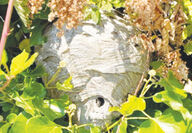Sorted by date Results 1 - 14 of 14
In the 1950s bird migration information was sketchy without a good format. Most banding research was done with metal tags as leg bands on waterfowl. Not much information was useful. The leg bands counted birds killed in the field by hunters. Passerine research was provided by field birders who knew the flight songs of Swainsons’s thrush and other more common night migrants. On full moon nights spotting scopes were used to count birds passing through more reflective light arcs. Mist nets and aluminum bands were used on smaller birds. The problem...
We almost always assume everything will be the same. That is not true for humans or birds. Climate change in California is affecting birds more so than people. Thirty percent of California forests have burned in the last decade. This does not include the loss of plants due to erosion, which provided food and shelter. During migration, most birds live off the land. They consume fruit and water. Plants lost to fire may take years to repopulate and provide this food. This year there seems to be a reduction in swallows numbers. Part of this may be...
The wandering albatross has the longest wingspan of all living birds at over nine feet. This species may live to be 40 years old and start breeding at eight years old. They only lay one egg every two years and it can take up to two years to raise a chick. The nest is built in a wind-swept area to help the adult get airborne. Ninety mph winds are not uncommon, and these winds may blow the chick out of the raised nest, in which case the adult does not recognize it and will not feed it. Unless they are in the nests, chicks will starve to death....
Here are ways to identify larger birds visiting your backyard and property. Every year or so some evening grosbeaks visit a feeder for sunflower seed. They are robin sized but more heavily built. They usually show up in small flocks vocalizing with whistle like calls. Male and females have different color patterns. Both have heavy seed cracking bills, and they show up in late winter into early spring. Their main food in this area is the samara or seed pod of big leafed maples. They nest in the middle elevations of the cascade mountains in...
Crows as a group are somewhat territorial. Some groups are highly aggressive and don’t leave their area in search of food. They have fixed borders that they defend against other crow clans. Intruders are attacked and driven off by the owners. The British term for a flock of crows is a “murder” of crows. If crows find a great horned owl during the day they will mob it, sometimes for hours. At night the owl rules and may take over a crow’s nest as its own. The crow, realizing its disadvantage, will not argue the point and will leave rather...
The house wren is a scrappy little critter. During nesting season, it fills cavity nesting holes with sticks even if the current owner has a nest with young or egg present. Fights may break out with the owner and that bird may lose because of the wren’s persistence. If a wren nests near you, you will know because of the continuous singing that starts at dawn and continues most of the day and even into the night. The songs are very repetitious. Populations usually arrive in April but are uncommon in this area. They like semi open areas with b...
Identifying a species of bird is usually based on color patterns, size and its movements, but occasionally it becomes more complex and can lead to dead ends. Sometimes actions overlap and size doesn’t help. I’ve spent some time hiking the dike trail on the west side of the parking lot on Padilla Bay and had problems identifying some common species. The habitat was basically acres of low grass grown as lawn grass for seed. It is short and green all year. Birds seen at a distance were foraging for worms, mainly cutworm and wireworm. They wer...

There was some interesting action on the dike path at Hayton Farms Game Range at summer's end. The large territorial grasshoppers have been digging holes to lay eggs in the top gravel. This has drawn in large orchid wasps which was interested in parasitizing the grasshopper eggs and larva. The wasps were searching the area for covered nest holes. They are large wasps with long needle-like ovipositor attached to the back of their abdomens. They penetrate the prey and lays an egg inside of its vic...

I saved a seat next to me in my car so you could go with me to the Audubon Christmas bird count in the Skagit and Island County area., figuratively speaking. This is our contribution to the national bird count in the lower 48 states, Canada and Alaska. The goal is to track how species are doing locally. The data allows tracking for how well species are doing both short- and long-term. A car is needed to reach our assigned area. For years mine has been the Deception Pass section south of the...

I am back at the Wylie Game Range, where I take regular walks for exercise as well as to assess the changing environment. Each time there are different animal participants. In mid-September I was walking over the culvert road going to the wildlife parking lot and office. There were four gadwall ducks on the left side between the two road culverts. They acted upset and swam towards me which is unusual. I noticed behind them an obvious line of surface ripples made by something pursuing them. All...
I have a science background and love to compare environmental systems. Some systems may mirror others to some extent but many have unique relationships. Some people have a handle on what are called key species or perhaps apex predators. These species may be important to maintain environmental balance. Often new people with a science background come into a science field with an open mind and new ideas. A new college graduate moved into the Pacific northwest with a new career in marine biology. He was stationed on the coast near saltwater. He...
I received positive feedback from readers from recounting a Texas trip, including jail time, while doing bird photography. The state of Texas has proved to be interesting RV-wise, too. On US Hwy 10 in west Texas going east you could almost go to sleep at the wheel because the road is straight or nearly so going to Fort Stockton. It is mile after mile of nothing but mile after mile. It is open country and mostly flat land. The most common objects breaking up the boredom are the hundreds upon hundreds of large wind turbines on the low ridges....
Birds migrating in the fall may go as far south as Mexico or even South America. They may start as early as August or as late as November. Southerly migration may be slower because more food is available in northern reaches. Some species take two to three months while others may arrive in less than a month. Habitats can be unproductive due to wildfires or drought. I did a fair amount of bird photography in the Sierra Nevada mountains in California in the mid to late 1980s. Since that time wildfires have burned much forest. This has left large a...
Some species migrate south in late summer and fall. On a clear or partly cloudy night about a half an hour to an hour after sunset the Swanson’s thrush, a local nesting bird, will take flight going south. It will reach a height of up to 500 feet or more. The species flies south using the stars as a guide. You can hear their whistle call in flight. On a cloudy night they may not fly at all. Birds come south from as far away as Alaska. Hermit and varied thrush are vertical migrants coming down from the mountains to the lowlands. The hermit t...